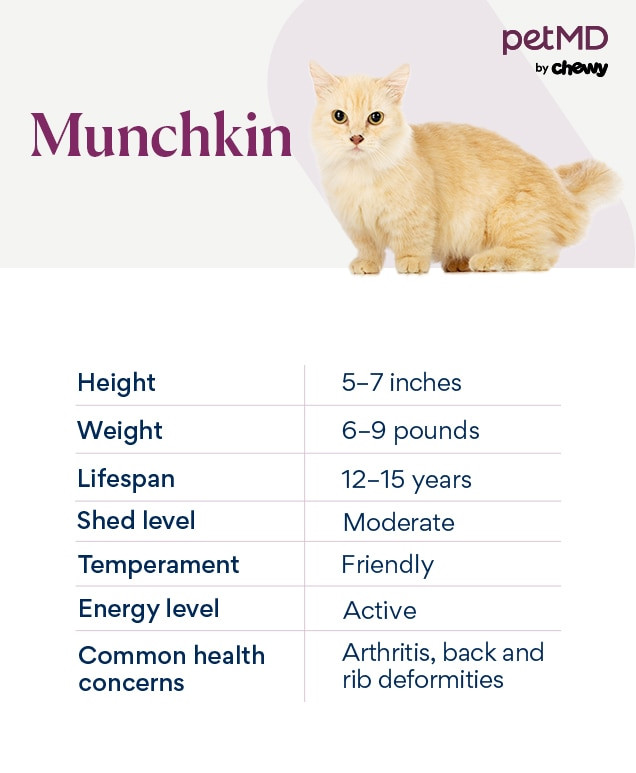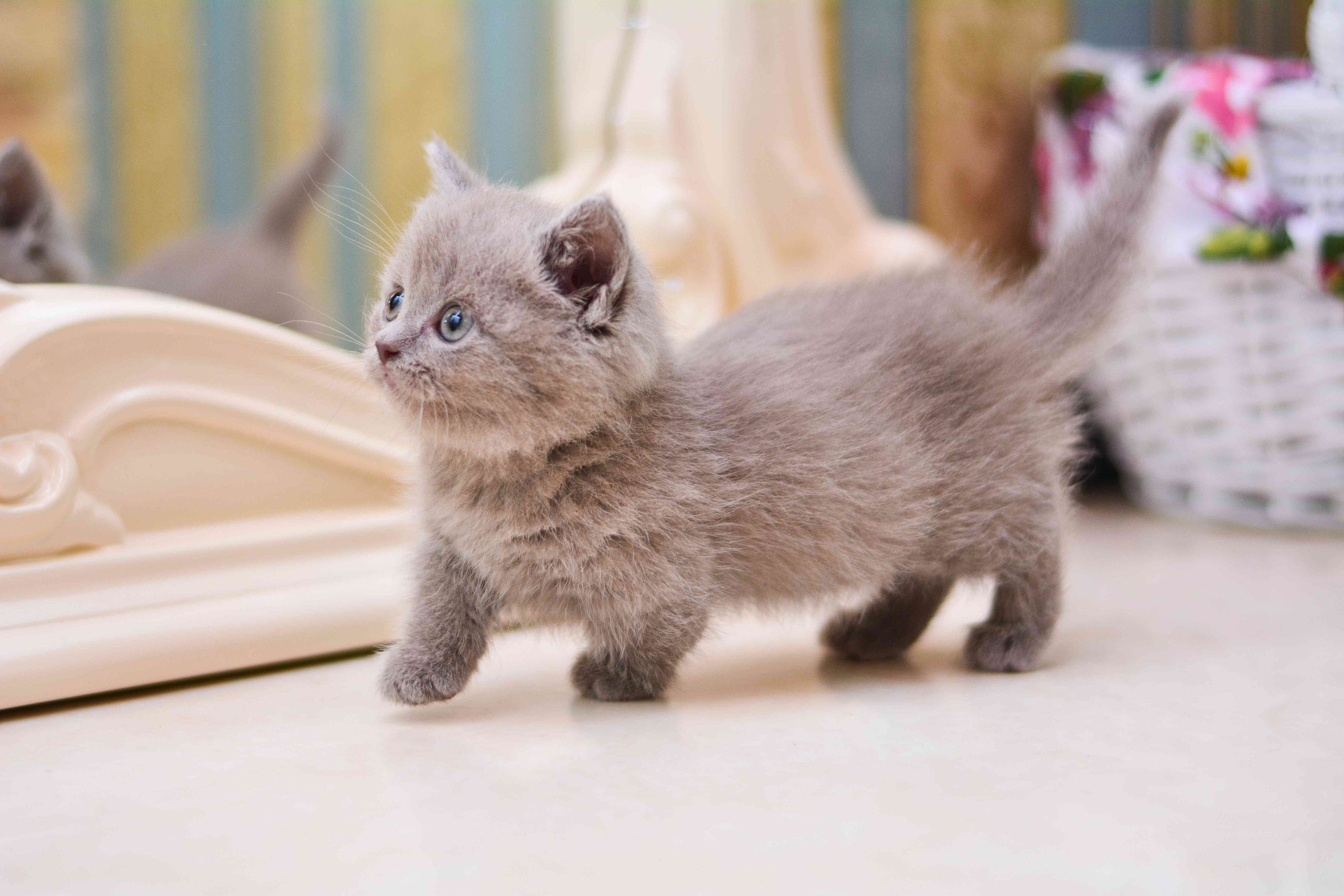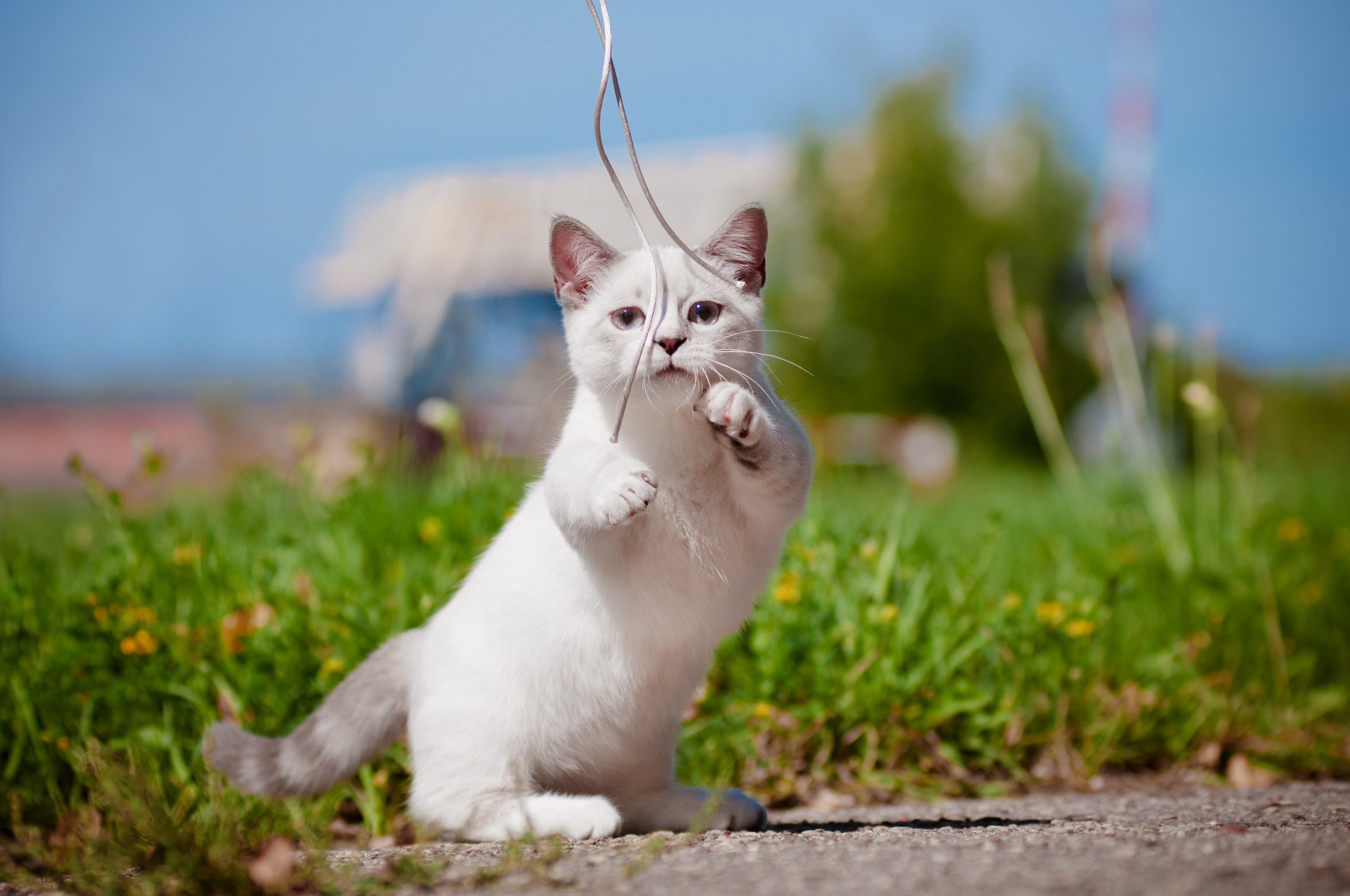The Munchkin cat, often endearingly referred to as a “Midget Cat” due to its distinctively short legs, is more than just an adorable anomaly. These felines, known for their playful nature and affectionate personalities, possess a unique charm that extends beyond their diminutive stature. While their short legs, typically about 3 inches shorter than those of an average cat, might be their most striking feature, it’s their spirited character and loving disposition that truly capture the hearts of cat enthusiasts. Paired with a body of average size, generally weighing between 6 to 9 pounds, this dwarf cat breed presents a captivating appearance, complemented by a temperament that’s often described as the “cherry on top” of their appeal.
It’s important to note that the Munchkin cat’s recognition as an official breed is not universally accepted within the cat fancy world. Organizations like The International Cat Association (TICA) have embraced the Munchkin, acknowledging it as a distinct breed. However, the Cat Fanciers’ Association (CFA), among others, refrains from this recognition. This divergence stems from ongoing discussions and concerns surrounding the genetic mutation responsible for their short legs and whether this characteristic predisposes them to potential health complications.
Caring for Your Midget Cat: A Guide to Munchkin Cat Care
 munchkin cat breed chartThe defining characteristic of the Munchkin, or midget cat, breed – their short legs – is a result of a natural genetic mutation. Beyond this unique trait, their physical build largely aligns with that of a typical small-sized cat.
munchkin cat breed chartThe defining characteristic of the Munchkin, or midget cat, breed – their short legs – is a result of a natural genetic mutation. Beyond this unique trait, their physical build largely aligns with that of a typical small-sized cat.
Dawn Lott, a seasoned Munchkin breeder and exhibitor with 23 years of experience, and also the TICA breed chair, offers valuable insights into their temperament. “Munchkins remain playful and kitten-like for most of their lives,” she remarks. She describes these friendly felines as attention-seeking and even somewhat dog-like in their attachment to their humans, noting, “They are likely to follow you around the house quite a bit.” For pet parents considering a Munchkin, Lott suggests ensuring they have other animal companions at home to provide constant company.
Midget cats are not just sociable; they are also intelligent creatures who thrive on mental stimulation through toys and interactive games. “Munchkins enjoy playing with almost anything,” Lott explains. Adding to their playful repertoire, “They are also known to be little thieves, often found pilfering items from countertops or dressers, engaging with their ‘treasure’ until it disappears under furniture or elsewhere.”
A common misconception is that their short legs limit a Munchkin cat’s ability to reach elevated surfaces. However, this is not always the case. Prospective owners should not assume that tempting items placed high up are safe from the curious paws of a midget cat. Their jumping prowess might surprise you!
Midget Cat Health: Understanding Potential Munchkin Cat Health Issues
Munchkin cats, or midget cats, are often robust and healthy despite their short stature. Their lifespan typically mirrors that of other cat breeds, averaging around 12 to 15 years. However, like all breeds, there are specific health considerations that pet parents of Munchkins should be aware of.
Due to their generally high activity levels, weight management is usually not a major concern for Munchkins. However, for those who may develop certain health conditions or experience mobility limitations due to chronic pain, maintaining a healthy weight and body composition becomes particularly crucial. Given their short legs, any extra weight can impose additional stress on their spines.
Osteoarthritis in Midget Cats
The very trait that defines the midget cat, their short legs, is also a point of contention. The genetic mutation responsible for their shortened limbs also affects cartilage formation, explains Dr. Paula Simons, a veterinarian specializing in emergency and critical care at Cornell University Veterinary Specialists. This cartilage defect predisposes Munchkins to osteoarthritis and related mobility issues. Dr. Simons clarifies, “It would be inaccurate to suggest they can jump or run as effectively as a cat with normal leg length.”
If you observe your Munchkin cat becoming less inclined to run, jump, or engage in their usual playful activities, it’s advisable to consult with your veterinarian. They can discuss pain management strategies, which may include prescription medications and joint supplements designed to support cartilage health.
Lordosis in Midget Cats
Munchkins are also more susceptible to a congenital condition known as lordosis. Lordosis is a malformation present from birth characterized by an inward curvature of the spine in the lower back, as noted by Dr. Simons. While some cats with lordosis show minimal signs of discomfort, in others, it can lead to spinal pain, an observable leaning to one side, and restricted movement.
Pectus Excavatum in Midget Cats
Pectus excavatum is another congenital defect that can occur in midget cats. This condition arises when the lower ribs and sternum do not develop normally, resulting in a sunken or hollowed chest appearance. Although present from birth, pectus excavatum may not become noticeable until the cat reaches full maturity, at which point the condition typically ceases to progress.
“Pectus excavatum can cause compression of the heart,” Dr. Simons elaborates. “Mild cases may present no obvious clinical symptoms, but more severe instances can lead to significant cardiac and respiratory problems. Surgery is often recommended for cats with moderate to severe pectus excavatum to alleviate these complications.”
Feeding Your Midget Cat: Nutritional Guidelines for Munchkin Cats
 gray midget kittenPhoto credit: Adobe/Дария
gray midget kittenPhoto credit: Adobe/Дария
Munchkin cats, or midget cats, do not have unique dietary needs compared to other breeds, according to Dr. Simons. “The key is to ensure they are fed a cat food that is approved by the Association of American Feed Control Officials (AAFCO) and appropriate for their current life stage,” she advises. Veterinarians frequently recommend a combination of wet food, which aids in hydration, and dry kibble, which can help in reducing tartar buildup on teeth.
How to Properly Feed a Midget Cat
Establish a routine of feeding your Munchkin measured meals two to three times daily. Always select food formulated for their specific life stage – kitten, adult, or senior. Avoid free-feeding, where food is constantly available, as this practice can contribute to obesity in cats. If your Munchkin exhibits signs of whisker fatigue, such as reluctance to eat from a deep bowl, consider switching to a flat plate or mat for their meals.
Determining Food Portions for Your Midget Cat
The appropriate amount of food for your Munchkin depends on several factors, including their weight, activity level, overall health, and age. Start by consulting the feeding guidelines provided on the cat food label for portion recommendations. However, the most accurate way to determine your cat’s specific dietary needs is to consult with your veterinarian. If you notice your Munchkin is becoming overweight, Dr. Simons suggests discussing a weight-loss diet plan with your vet.
Nutritional Tips for Midget Cats
Given the predisposition of Munchkins to developing arthritis, Dr. Simons emphasizes the importance of feeding them a high-quality diet that includes supplements to support joint health. These supplements can play a crucial role in maintaining their mobility and comfort as they age.
Midget Cat Behavior and Training: Understanding Munchkin Cat Temperament
 white midget cat playing with stringPhoto credit: Adobe/Adobe/otsphoto
white midget cat playing with stringPhoto credit: Adobe/Adobe/otsphoto
“Munchkin cats, or midget cats, are generally considered highly sociable, playful, and intelligent,” states Dr. Simons. “This combination of traits makes them ideal family pets, known for their generally good-natured disposition.” These energetic cats typically integrate well with all family members, including both humans and other pets. While they enjoy affectionate cuddles, they usually prefer to expend some energy through play first.
Midget Cat Behavior Traits
These short-legged felines tend to be confident and outgoing, readily exploring their surroundings and making new acquaintances. They are not excessively vocal cats. While not prone to anxiety, they do thrive on companionship, so if you are frequently away from home, consider providing your midget cat with a furry companion.
Training Your Midget Cat
Dawn Lott highlights the intelligence of Munchkins, making them a trainable breed. Munchkin kittens are typically quick to learn litter box training, especially when positive reinforcement methods like rewarding them with cat toys and treats are used.
Fun Activities for Midget Cats
- Playing with a variety of toys
- Engaging in playful wrestling
- Enjoying cuddling sessions
- Racing around the house with bursts of energy
- Jumping and climbing (cat trees with lower entry points are particularly suitable)
- Scratching on designated scratching posts
- Relaxing and basking in sunny spots
Midget Cat Grooming: A Guide to Munchkin Cat Coat Care
Munchkin cats, or midget cats, can have either long or short coats. Regularly monitor your Munchkin’s fur and brush them as needed to prevent mats and tangles. Long-haired Munchkins may require more frequent grooming sessions compared to their short-haired counterparts. Generally, however, this breed is considered to have a relatively low-maintenance coat.
Coat Care for Midget Cats
Dr. Simons advises weekly brushing for all cats, including Munchkins. Due to their short legs and potential mobility issues arising from osteoarthritis or lordosis, these miniature cats may have difficulty grooming themselves as thoroughly as cats with normal leg length. Pay close attention to areas your Munchkin may be neglecting or unable to reach effectively.
While routine bathing is not essential, Lott suggests that occasional baths can help reduce shedding if it becomes a concern. However, it’s worth noting that Munchkins generally do not shed more than the average cat breed.
Eye and Ear Care for Midget Cats
Munchkins do not require specialized eye or ear care. However, it’s important to be vigilant for signs of potential eye problems, such as discharge, swelling, or cloudiness, and consult your veterinarian if any of these symptoms appear. Similarly, for ear care, if you observe any unusual buildup, redness, or odor in your Munchkin’s ears, seek veterinary advice.
Considerations for Midget Cat Pet Parents
The allure of a playful, fluffy Munchkin cat, or midget cat, is undeniable. Their adorable appearance, friendly demeanor, and entertaining antics – even the occasional playful theft of small trinkets – make them delightful companions.
If you are considering welcoming a Munchkin kitten into your home, it’s crucial to have an open conversation with the breeder about the health history of their cats. Be aware that while most Munchkins navigate their world with ease, the genetic mutation that gives them their characteristic short legs can, in some cases, predispose them to certain health issues.
Midget Cat FAQs: Common Questions About Munchkin Cats
How much does a Midget Cat cost?
Lott indicates that the average cost of a Munchkin cat typically ranges from $1,000 to $1,500. Prices can vary based on geographic location, coat color, and other factors influencing breed popularity and availability.
Is a Midget Cat a good house cat?
Absolutely! The Munchkin, or midget cat, is renowned for being an excellent house cat. They readily form bonds with everyone in their household. Whether you live in a bustling home with children and other pets or enjoy a quieter, solitary lifestyle, a Munchkin cat can be a wonderfully adaptable and affectionate companion.
Are there hairless Midget Cats?
Yes, the Bambino breed represents a cross between the hairless Sphynx cat and the Munchkin, resulting in a short-legged, hairless cat. However, the Cat Fanciers’ Association, which does not recognize the Munchkin breed, considers the Bambino to be an experimental breed and discourages its development.
Featured Image: Adobe/otsphoto
WRITTEN BY
Kristen Seymour
Freelance Writer
